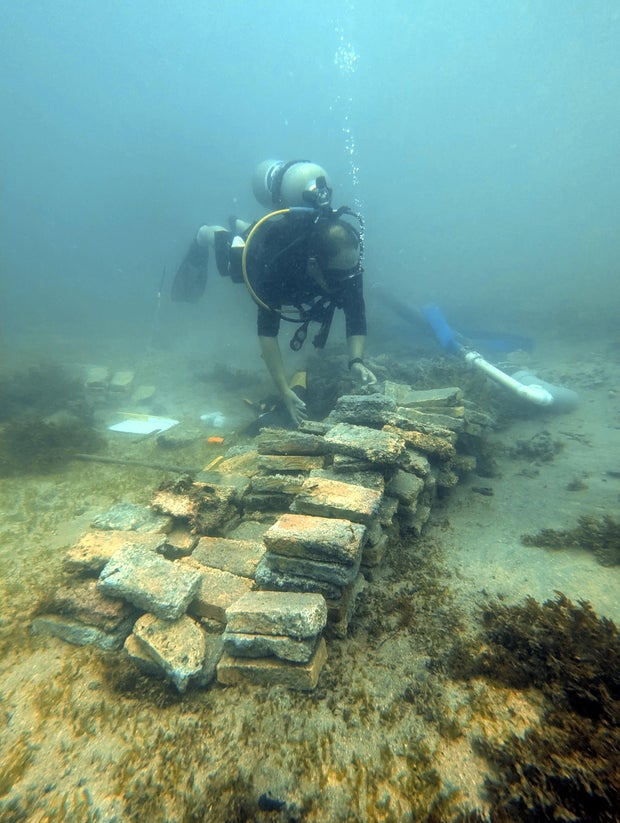Two 18th-century shipwrecks off the coast of Costa Rica, beforehand thought to have been pirate ships, have been confirmed to be two Danish slave ships, a museum stated Sunday.
“Investigations of ship timbers, bricks from the cargo and clay pipes discovered throughout underwater excavations” had decided the id of two vessels shipwrecked in 1710, Denmark’s Nationwide Museum stated in an announcement.
Marine archaeologists recognized the slave ships Fridericus Quartus and Christianus Quintus, which, in line with historic sources, had been wrecked off the coast of Central America in 1710, stated the museum. The museum additionally launched pictures of Andreas Kallmeyer Bloch and David Gregory digging underwater and excavating bricks and wooden from the wreckage.
John Fhær Engedal Nissen/The Nationwide Museum of Denmark.
Fridericus Quartus was set on hearth, whereas Christianus Quintus was wrecked within the surf after its anchor line was lower. Till now, it has not been clear precisely the place the ships had been misplaced.
The museum added that in Costa Rica, it had lengthy been identified that two wrecks had been positioned within the waters of the Cahuita Nationwide Park.
“For a few years, nonetheless, they had been regarded as pirate ships. However when American marine archaeologists in 2015 discovered yellow bricks in one of many wrecks, new questions emerged concerning the historical past of the ships,” the museum stated.
An underwater excavation was carried out in 2023. It was a part of the Nationwide Museum’s new analysis middle, Njord, which the museum stated is planning to excavate a number of Danish shipwrecks overseas.
Jakob Olling/The Nationwide Museum of Denmark
“The analyses are very convincing and we not have any doubts that these are the wrecks of the 2 Danish slave ships,” Gregory, a analysis professor at Denmark’s Nationwide Museum, stated within the assertion.
“The bricks are Danish and the identical goes for the timbers, that are moreover charred and sooty from a hearth. This matches completely with the historic accounts stating that one of many ships burned,” Gregory added.
Fellow marine archaeologist Bloch, who’s additionally a museum curator, known as it “undoubtedly the craziest archaeological excavation I’ve but been a part of.”
“Not solely as a result of it issues enormously to the native inhabitants, but additionally as a result of it is probably the most dramatic shipwrecks within the historical past of Denmark, and now we all know precisely the place it occurred,” the marine archaeologist stated.
The Danish authorities banned the transatlantic slave commerce in 1792, however the nation did not abolish slavery till half a century later, in 1847, in line with the museum.


